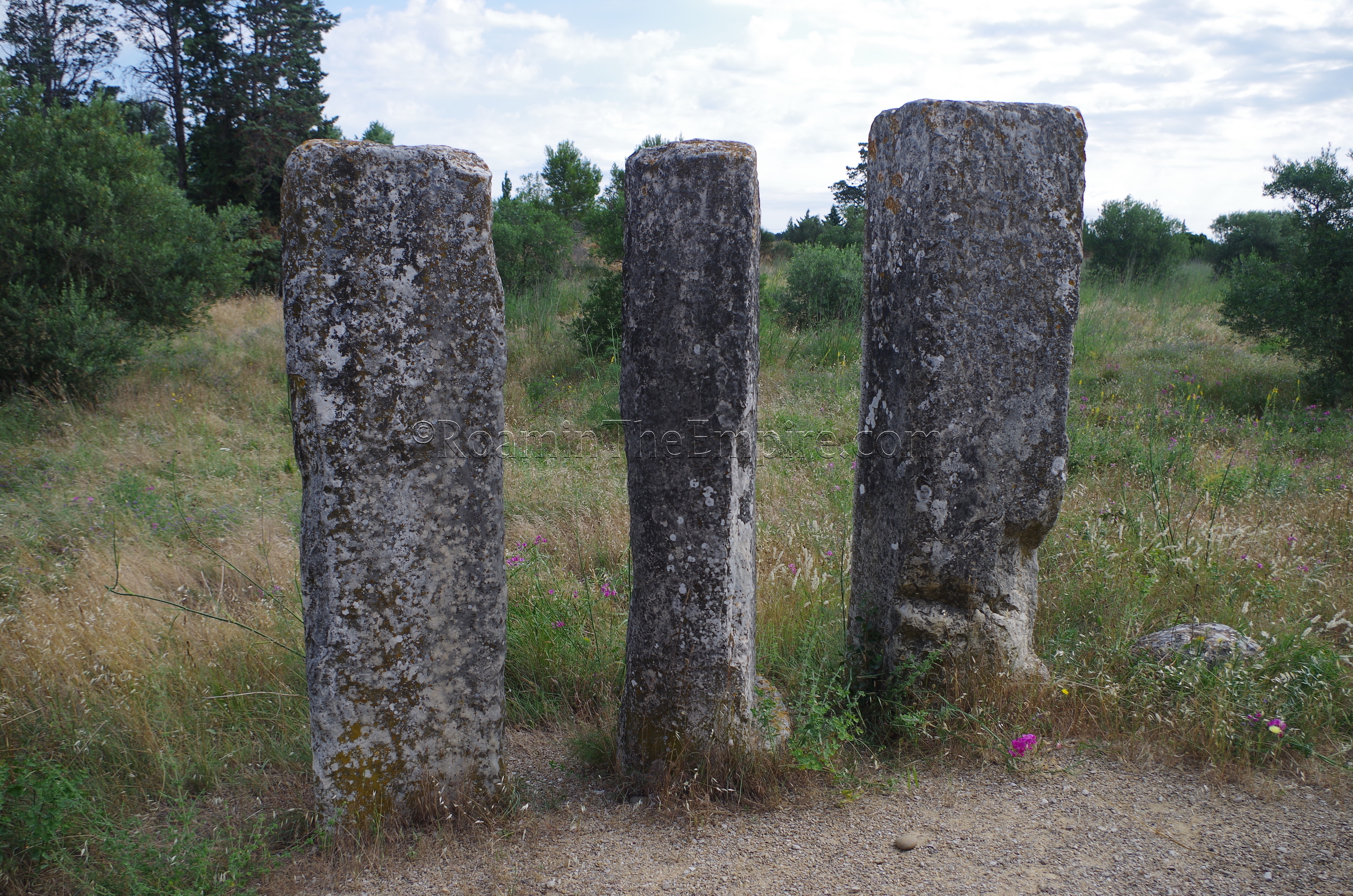
Most Recent Visit: June 2018.
One of the great things about having a private vehicle is being able to visit some of the smaller sites that are often in rural areas with limited or no public transportation options. As with some of the other sites in Gallia Narbonensis, I’ve grouped some of these smaller sites into a roughly workable itinerary in a general geographic area. While I didn’t see all of these the same day, as some of them do work well as short add-ons to larger nearby sites, the itinerary does work for a single day that isn’t too strenuous.
The first stop on this itinerary are a few milestones located west of Beaucaire, not far from the D999 highway. The milestones are located in a rather industrialized area near a modern quarry operation, and actually took me a bit to find, though with proper explanation they’re rather easy to get to. I’ve pinned the parking area on the map, and from there a walk west along the dirt road (which is blocked off by large rocks to prevent road traffic) for about 200 meters leads to the stones. There is no admission or limitations of access to the area other than that, though. There are three large standing milestones found in-situ at this location, and one smaller milestone. Though the inscriptions have long since weathered off, they have been identified as belonging to the reigns of Augustus, Tiberius, Antoninus Pius, and Julian. There is a small informational sign in French next to the stones.
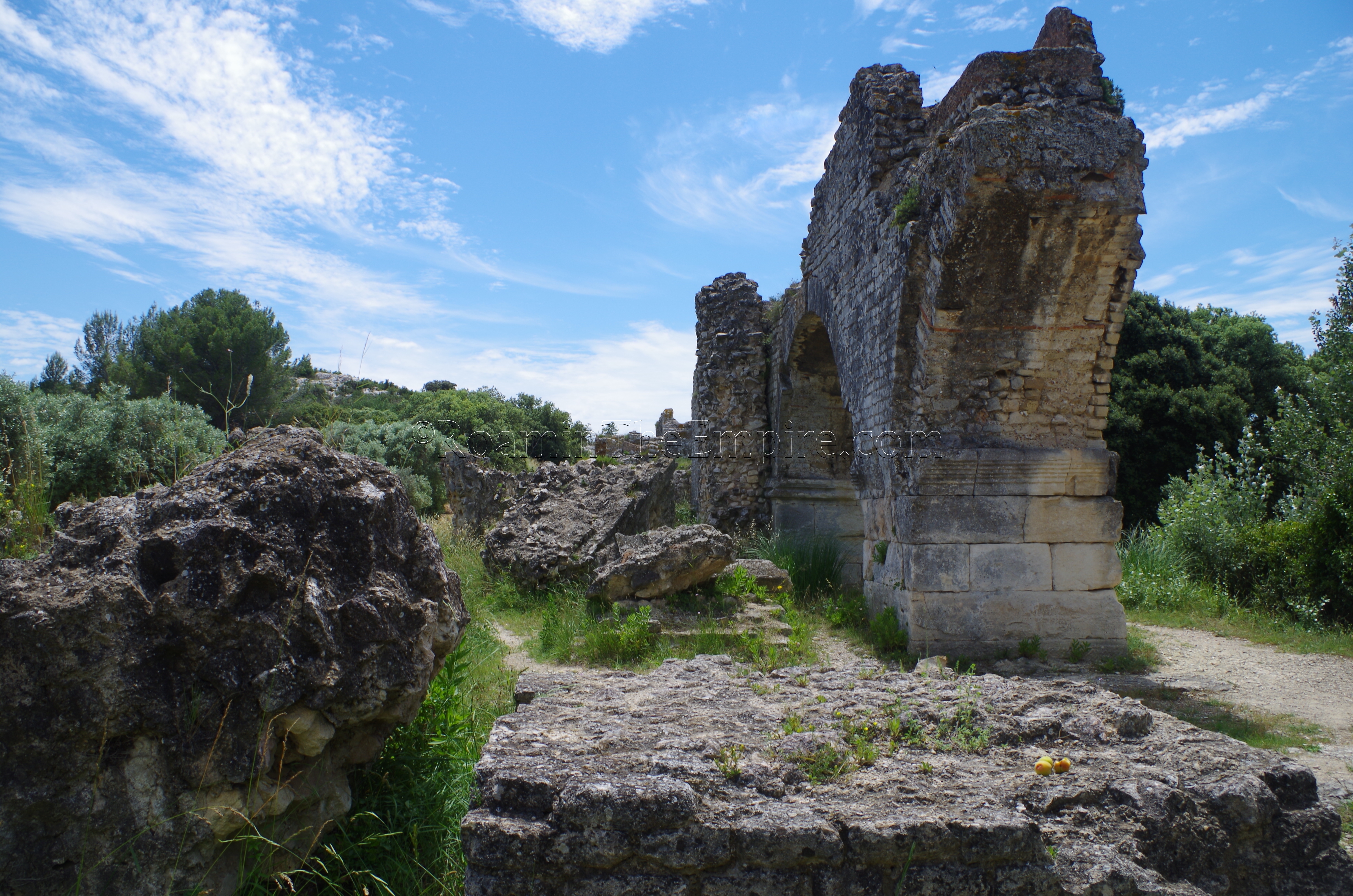
Barbegal Mill
Less than 8 kilometers to the northeast of Arles is the Barbegal Mill and Aqueduct. The set of remains here actually contains the remains of two aqueducts that converge at this point as well as the remains of a water-powered gravity mill system. The first of these two aqueducts is the Caperon aqueduct, which was constructed to feed the mill. Its source located to the northeast about 11 kilometers, north of Maussane-les-Alpilles. Initially thought to have been constructed in the 4th century CE, it is now believed to have been constructed in the 2nd century CE, though some sources date it even to the Augustan period. The second of the aqueducts, the Eygalières Aqueduct, is also sourced from the northeast, but from a point much further, about 35 kilometers away near Cavaillon (Cabellio). It is the Eygalières that actually fed into Arelate and is the aqueduct that is visible running into the city through the remains of the eastern city walls. It is thought that the Caperon aqueduct originally supplied Arelate early on, but later demand necessitated the building of the Eygalières aqueduct, perhaps in the late 2nd century CE.
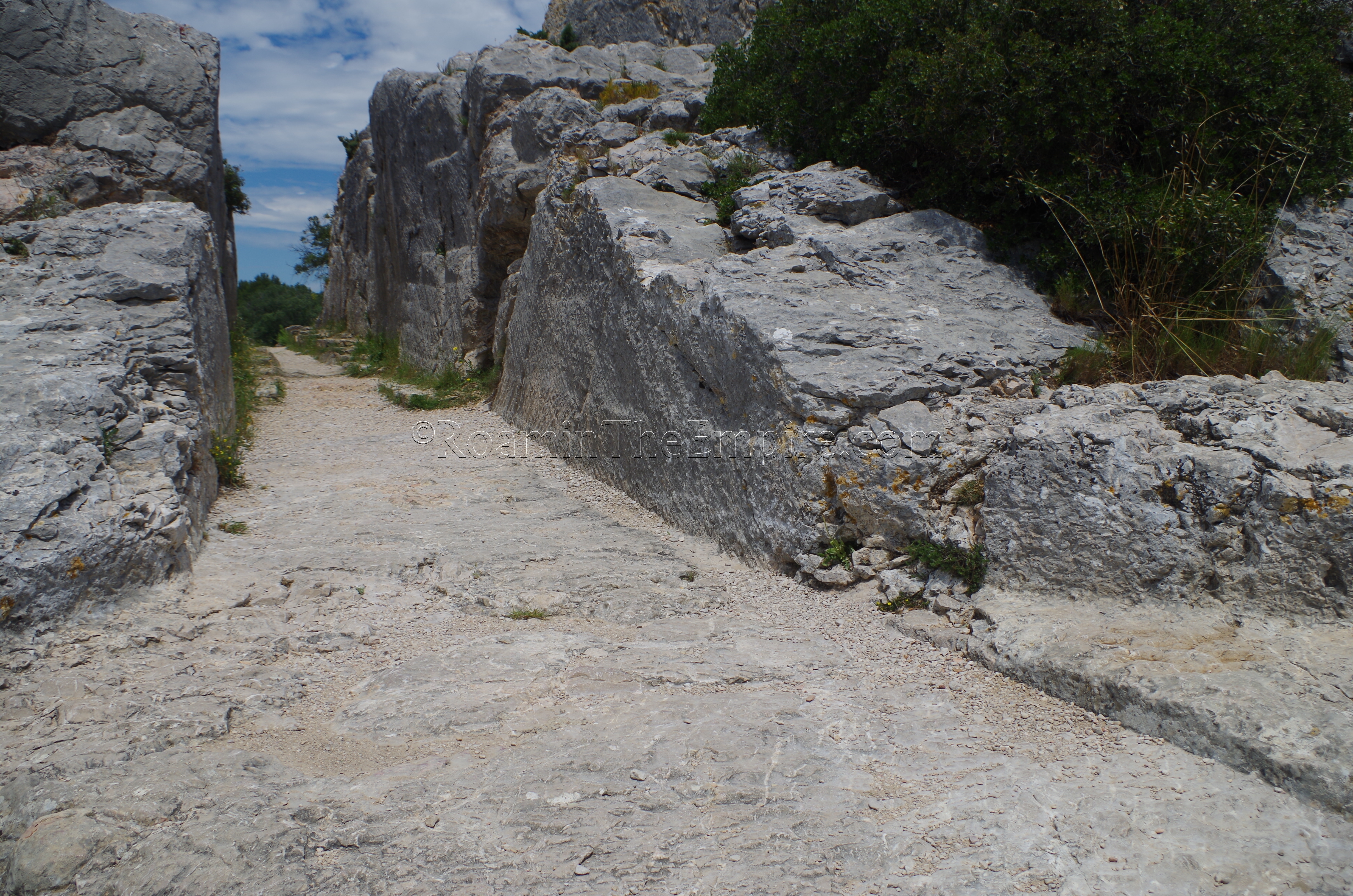
The remains are hard to miss as the vestiges of the Caperon aqueduct are clearly visible on either side of the D82 (Route de l’Acqueduc). There is a small parking area just to the east of this point. A few hundred meters north of the road is where the two aqueduct paths converged, though the aqueducts remained separate, running on parallel courses. About 75 meters of the parallel aqueduct courses (the Caperon on the east and Eygalières on the west) are visible to the north of the road, with the Caperon being the best preserved of the two in this stretch. South of the road, the two continue to run parallel in what is known as the Vallon des Arcs. In this stretch, it is the Eygalières that is most intact and the Caperon that is more fragmentary, at least until nearly the point that they branch off, when the Caperon becomes the more intact of the two. Upon reaching the area of the mill, the channel of the Caperon cuts through some rock leading to the mill while the Eygalières veers off to the west on its way to Arelate. Supposedly the channel of the Eygalières can be followed for a bit, but when I visited it was pretty heavily overgrown.
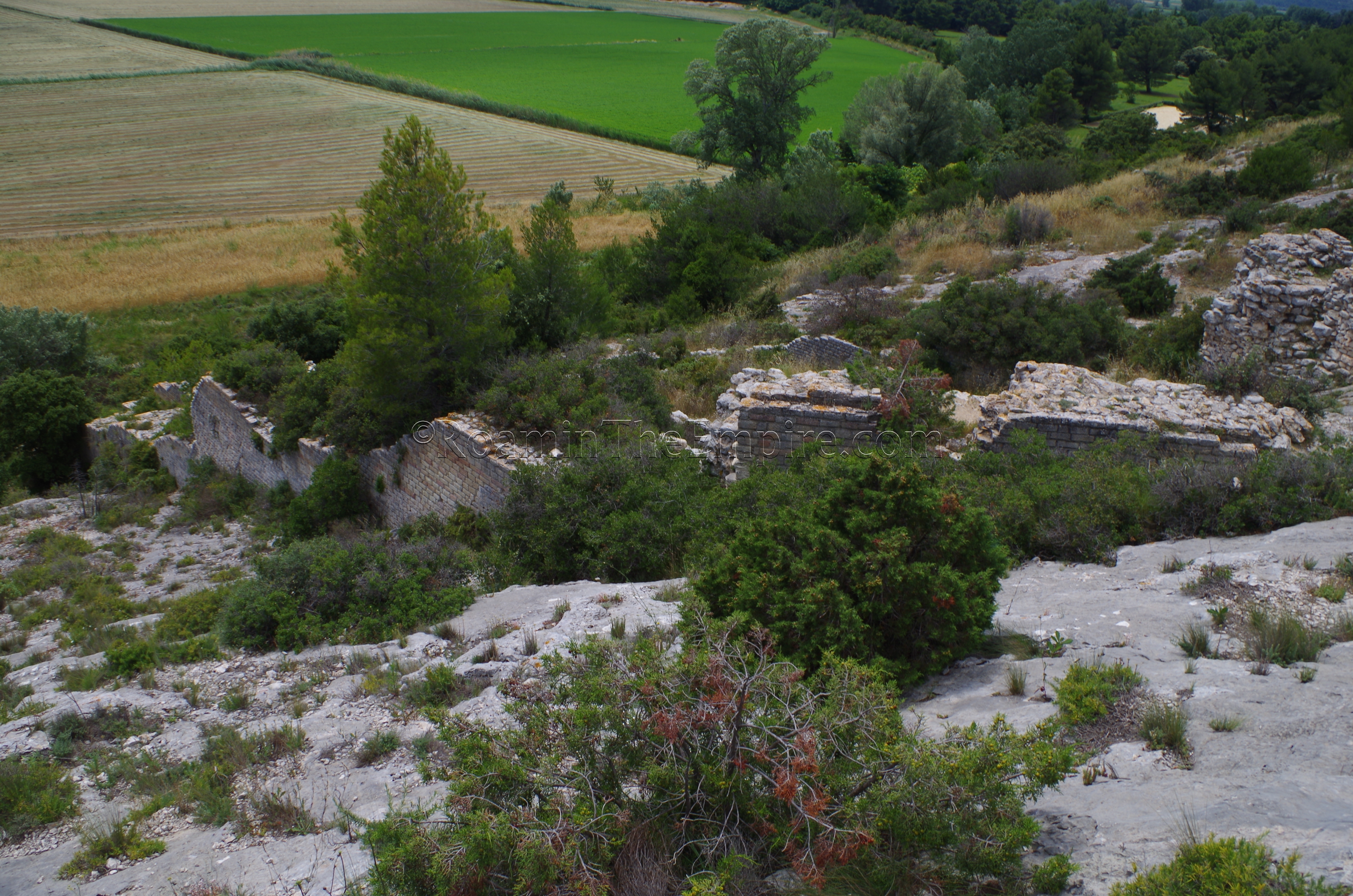
After the Caperon aqueduct cuts through the rock, it leads to the mill area, where the remains of the 16 mill houses arranged in 8 side by side pairs can be seen. Much of this was overgrown when I visited as well, but there are some pretty significant remains of the walls of the mill which can easily be seen. Water from the Caperon aqueduct cascaded down the side of the hill through the mill houses driving wheels that operated up to two millstones each that were used to grind wheat into flour. Estimates have varied widely at how much flour could be produced (taking into account hours of operation, availability of grain, and how many millstones were actually driven by each wheel), but even at the low end it is thought that the mill produced at least 2-3 tons of flour a day, perhaps enough to feed 10,000 people.
The site is a very cool and unique stop; few production sites like this survive in such a recognizable form, and this is the largest surviving mechanically powered production site in the Mediterranean from antiquity. It’s a little bit out of the way, but is absolutely worth the stop.
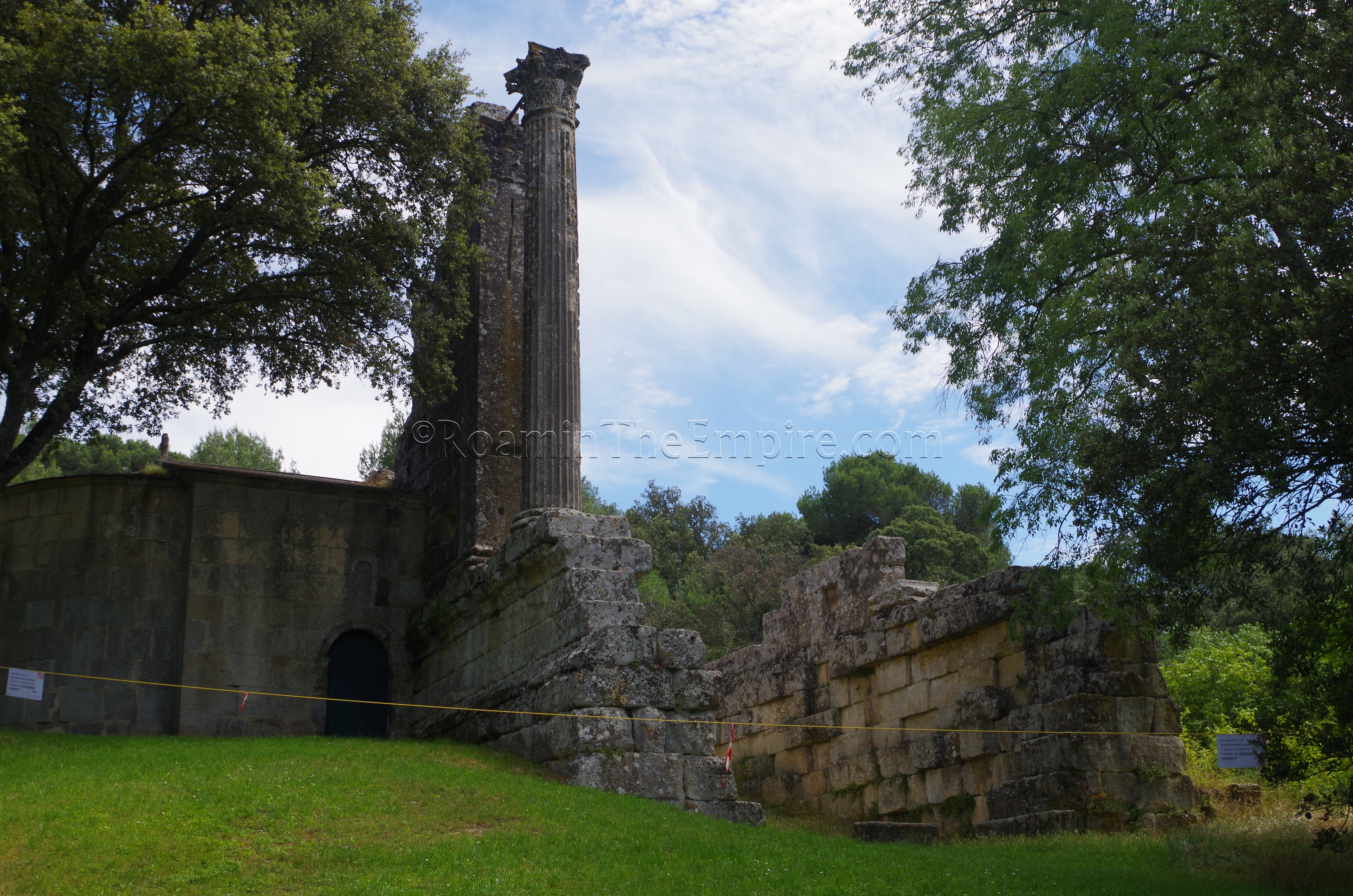
Vernègues Roman Temple
Heading east about 50 kilometers, near the town of Vernègues, are the remains of a Roman temple. The remains of this temple are located adjacent to a winery called Château Bas located off the D22 east of Vernègues. Since the location is rural, there really is no address to speak of, but the location marked on the map included in this post is accurate. The temple is not actually enclosed on the grounds of the winery, that is, when the winery is closed, the temple may still be visited. Though, the people working at the winery were happy enough to direct me to the temple when I inquired within. On the east side of the winery, where there is an area to park, there is a trail that leads south along the enclosed rear portion of the winery and back to the temple. Again, there doesn’t seem to be anything blocking access outside of business hours. Though, when I visited, there were ropes preventing (or discouraging, rather) close access to the building.
What remains of the temple is a very discernible cella structure as well as a Corinthian column on the east side of the entry. The temple has been roughly dated to the Augustan age, possibly the 1st century BCE. The level of preservation owes in some part to the presence of a medieval chapel, still visible on the east side of the temple. During excavations, some foundations of a second temple were found to the west, and it is theorized that there would possibly be a third temple to the east. This has led to some speculation that it was a site dedicated to the Capitoline Triad, as dedications to Jupiter and Minerva, but none to Juno have been found. Dedications to other deities including Silvanus, Mercury, and Neptune, as well as to Rome and Augustus have also been found, adding some confusion as to the actual dedication of the temples here. The remains of the temple are quite significant, and though it’s a bit off the beaten path, it’s well worth the diversion.
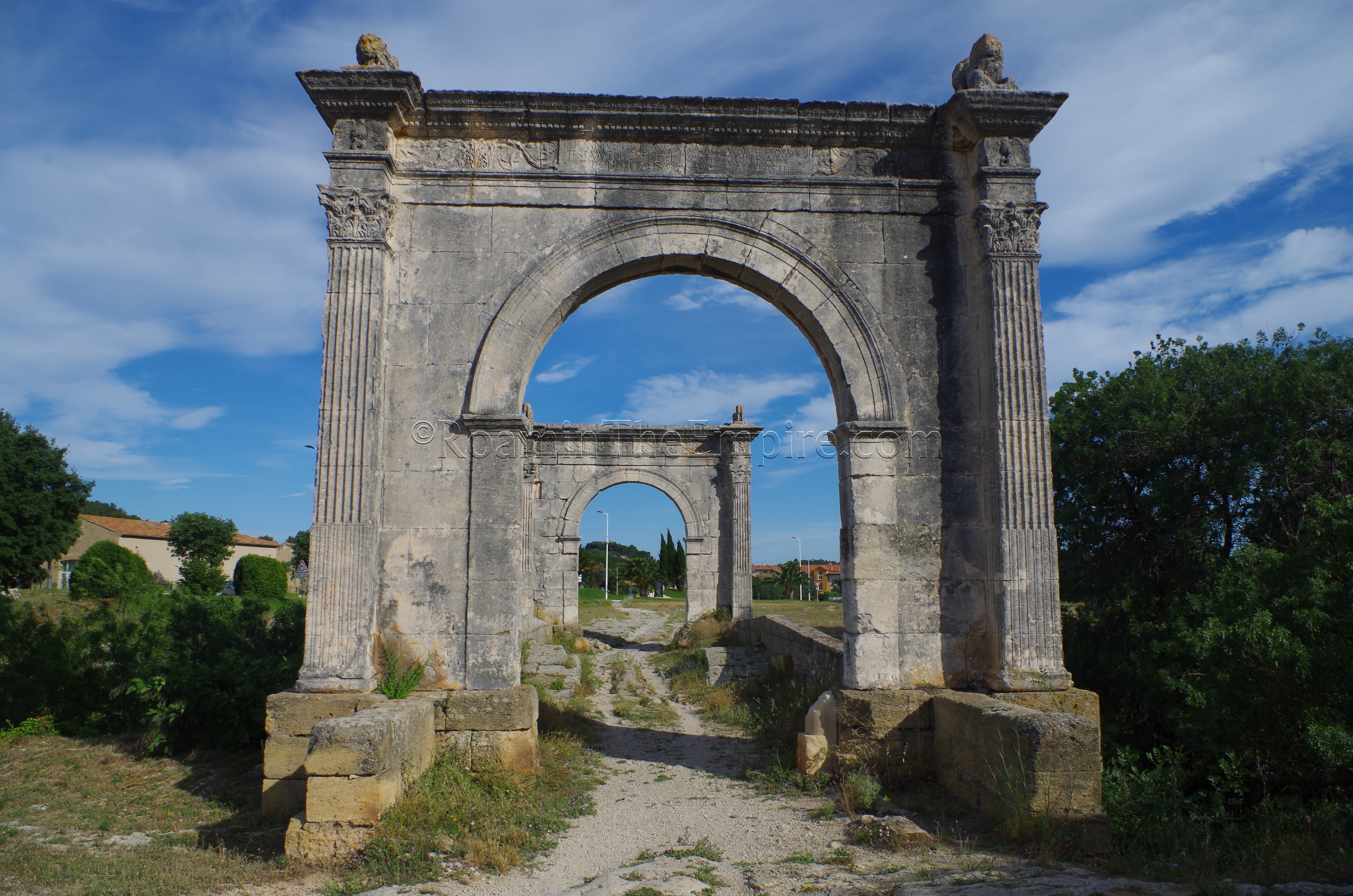
Pont Flavien
About 25 kilometers to the southwest is the next stop, the Pont Flavien. Just off the D10 (to the east), south of Saint-Chamas, the late 1st century BCE bridge spans the Touloubre river. There is a small parking area on the road just north of the bridge (Lotissement Flavien), which is freely accessible and has no entrance/admission restrictions. The name of the bridge doesn’t derive from the Flavian dynasty, but rather the dedicatory inscription on the western arch noting the bridge’s construction (carried out per his will) by a Lucius Donnius Flavos, a flamen of Rome and Augustus. The funerary connection for the construction of the bridge may explain the use of the ornate arches present on either end of the bridge, which are adorned with lion sculptures and reliefs of eagles and other patterns commonly associated with funerary monuments.
The bridge was in use up until the middle of the 20th century, and as such has undergone many renovations and reconstructions. The heavy use of the bridge necessitated periodic resurfacing, and as such, the ruts that are visible on the bridge today are not of Roman origin. There are also rutted roads radiating out from either end of the bridge, but the dating of these is unclear. Three of the four lions on the arches are copies, and the entire western arch had to be reconstructed after it was hit first by a German tank and later by an American truck passing over the bridge during World War II. It was only after this incident that the bridge was closed off to traffic and isolated as it is today. Other elements of the bridge have also been replaced. Despite some modern replacements and reconstructions (using ancient materials), the bridge is still among one of the most ornate Roman bridges remaining outside of Italy, and is well worth the stop.
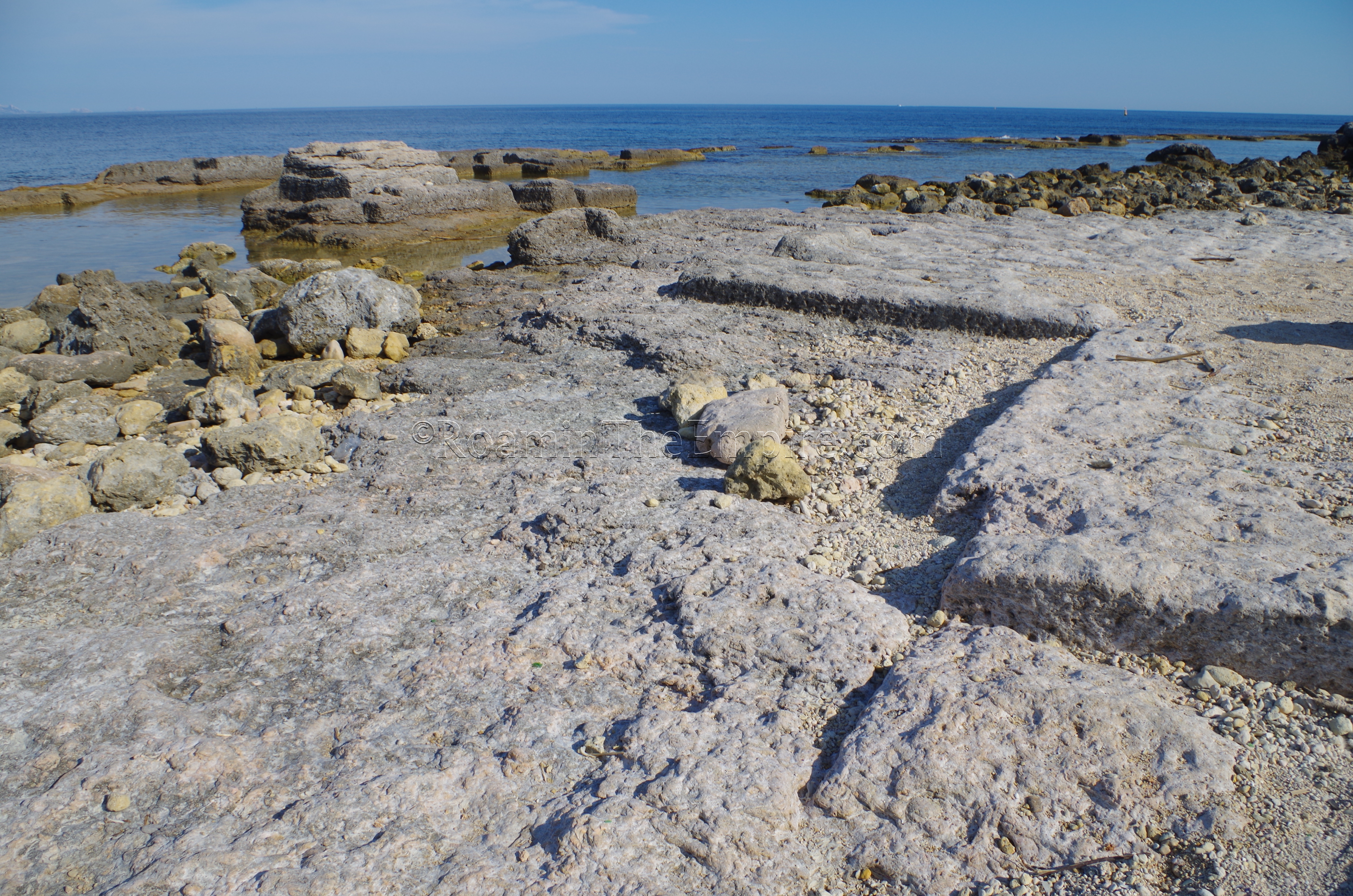
Cap Couronne Quarries
The last site on the itinerary through this part of Gallia Narbonensis is across the Étang de Berre on Cap Couronne. Along the coast to the south of the town of La Couronne are a number of ancient quarries in the rocky shore. There are a couple of areas that seem to have some fairly well defined quarry remains, though I was only able to visit one, the quarry along the Anse de la Beaumaderie, as it was late in the day and the access to some areas was restricted by the camping resort nearby. Even reaching the quarry I did visit was a little difficult due to the restrictions of the camping resort (Camping L’Arquet- Côte bleue), but I was able to find a place to park along Chemin de la Batterie and a path to walk down to the coast and the quarry from there (5-10 minute walk). Since the land that the quarry is on is public, there are no entry times or restrictions; it can be visited at any time.
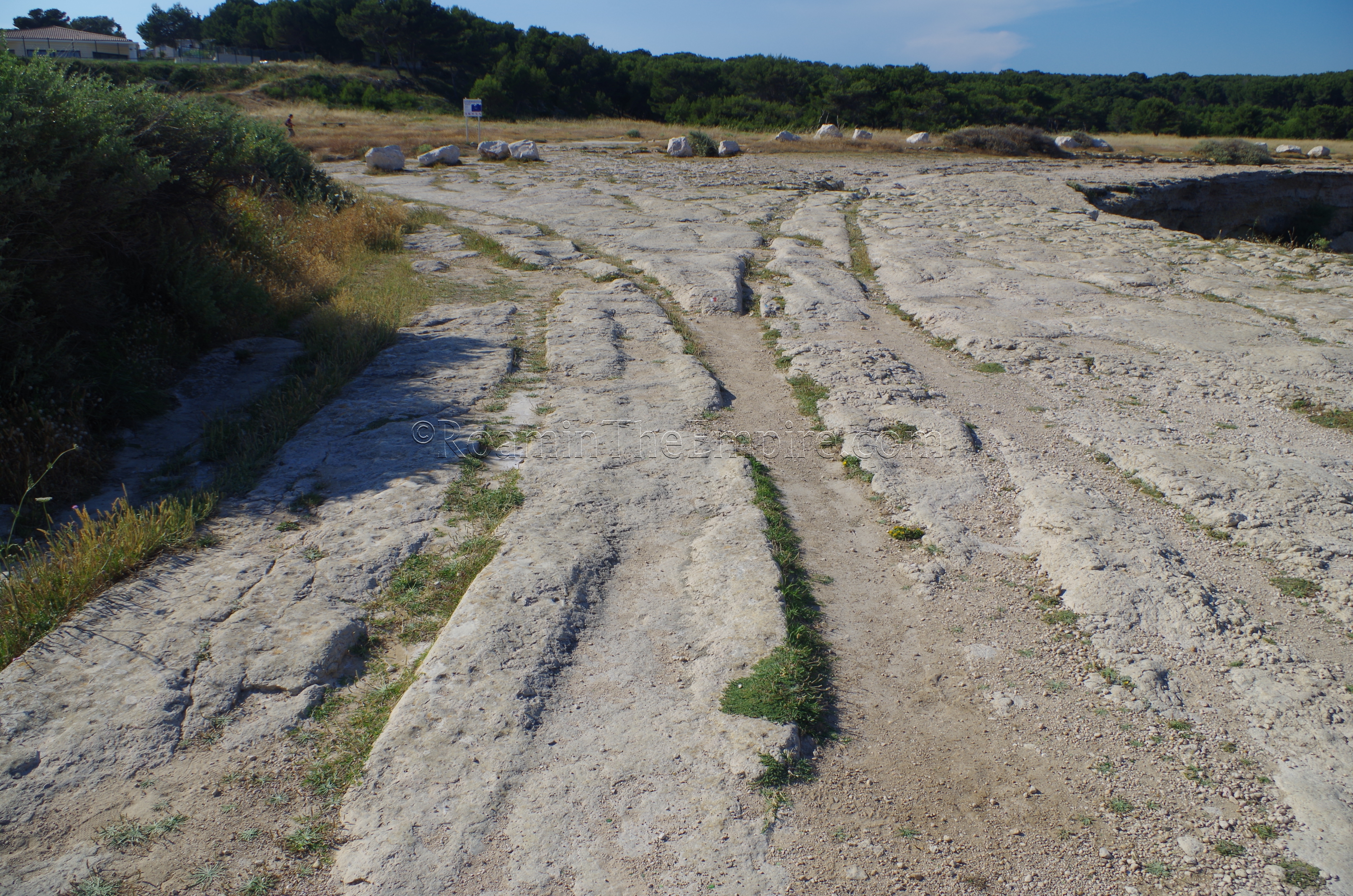
The quarry is located along the west side of the Anse de la Beaumaderie. Much of the quarried area is underwater now, but there are still significant portions visible that aren’t submerged or that are submerged in shallow water and still visible. The quarries along the coast here were apparently used as early as the 6th century BCE, and some of the stone used in Hellenistic constructions of nearby Massalia has been traced back to these quarries. Perhaps one of the most interesting aspects of the quarry, in my opinion, were the many sets of cart ruts branching out from the quarry. Starting in multiple parallel courses abutting the northern extent of the quarry, they eventually branch out in different directions, some heading straight, others branching off to the west, and then one track, traceable for a couple hundred meters, hugging the coast to the east. I also passed some evidence of quarrying further inland, on the walk between my car and the coast.
Some quarrying evidence is also visible along the next inlet to the west, on the west side of the Anse de la Couronne Vieille. Further there are some quarries around the lighthouse, the Phare de Cap Couronne. While I didn’t visit these specifically, it is clear from satellite imagery and some materials on the quarries that they are present there. They are apparently accessible from the parking lot near the lighthouse.
Sources:
Bromwich, James. The Roman Remains of Southern France: A Guidebook. London: Routledge, 1996.
King, Anthony. Roman Gaul and Germany. University of California Press, 1990.
Stillwell, Richard, William L. MacDonald, and Marian Holland. McAllister. The Princeton Encyclopedia of Classical Sites. Princeton, NJ: Princeton U Press, 1976.


